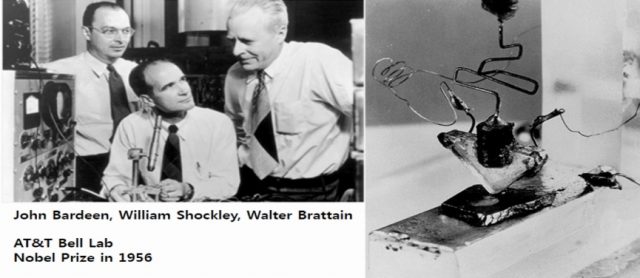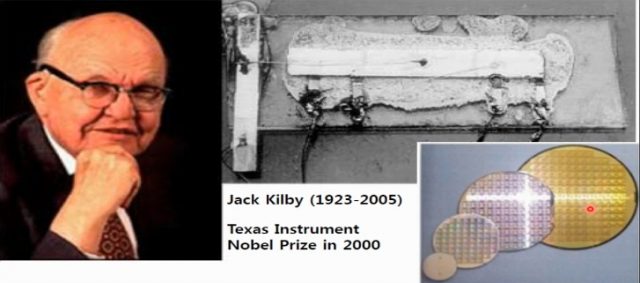Evolution of Electronics, Diodes, Transistor, and Integrated Circuits
Table of Contents
Evolution of Electronics:
Evolution of Electronics- In this article, we will study the relation of electronics. In this 21st century every day we are dealing with electronic circuits and devices in some form or the other. For example, electronic gadgets, home appliances, computers, transport system, cell phones, cameras, and TV etc.
History of electronics:
Before you learn electronics, it is necessary to know about the brief history of electronics. You will be inspired by the scientists who have discovered and invented different electronic devices. I will discuss evolution of electronics from vacuum tubes to very large scale integrated circuits that is VLSI.
Introduction to Electronics:
The word electronics, actually, this originated from the word electron. Electronics is a branch of science dealing with theory and use of devices in which electrons travel through vacuum gas or a semiconductor medium. So these are the different mediums in which the electrons are traveling. The electronics is the field of science which deals with the motion of electrons under the influence of applied electric or magnetic field. Electronics has evolved around three components basically:
- Vacuum tubes
- Transistor
- Integrated circuits
Vacuum Tube Era:
Let us see the first era of vacuum tubes, so, here first we will take the diodes. In 1883 Thomas Alva Edison discovered the electrons can flow from one metal conductor to another through vacuum. This discovery is of conductors is known as Edison effect. In 1897 John fleming, he applied this Edison effect in inventing a two-element electron tube called diode.
So this tube is actually the vacuum tube diode. Here you can see, this is the early vacuum tube or they are also called as the valves. It is made up of glass and inside the glass there is a vacuum. There are two electrodes in case of diode which is shown in the middle figure. The vacuum tube is connected with the battery and there will be flow of electric current. In 1906, Lee deforest he utilized the Edison effect to invent another element that is the triode. It is the electrode device as shown in the diagram you can see there is an anode and cathode and there is one more element that is called grid.
So the grid will control the law of electron that is why it is called as the control grid. Le de Forest he invented this triode in 1906. So this triode was instrumental in amplification and transmission of electrical energy. So here amplification means it is multiplying the energy in one form and then the energy is transmitted. But the vacuum tubes they were large in size bulky and because of the glass they were fragile so and they consume high power.
Transistors Era:
Then came the transistor era in 1948 three scientists John bardy, Walter Brattain and, William Shockley they developed transistor at the bay level and then they were given Nobel Prize for their creation in 1956.
These are the three scientists and the transistor which was first developed was shown in the figure. You can see it in the figure, now transistor again, it is a determinant device base, emitter, and collector. These are the three terminals of the transistor and this is just a crude model they have developed and then actually modern transistor is a junction transistor was developed in a same semiconductor piece. The first transistor was a point contact transistor. I will suppose you take there are two types of transistors PNP and NPN. So NPN is sandwiched between two N types of semiconductor if it is in a same semiconductor piece it is called as the monolith. So the junction transistor developed and two semiconductor materials that is germanium and silicon they were used to make the transistor and it was very popular and wide acceptance usage in different electronic circuit’s diode and transistor. Now, they are made from the semiconductor device and this transistor it become very popular and changed the whole electronics industry. So this metal transistor replaced the vacuum tubes as a semiconductor device. Because they are compact compared to the vacuum tubes and light in weight, low cost and less power consumption, fast and havier longer life if operated within same operating condition that is why they became very popular and that was a revolutionary change in the electronics. You might be knowing that radio we was call as transistor at that time because all the radio receivers they had few transistors that would receive the radio waves. So earlier we had the AM radio and then now we are having the FM radio.
Integrated circuits:
Then after this transistor was new then in 1958 Jack Kilby he came out with an idea of making the IC. So integrated circuit here he tried to put several components on a single chip. So he was the first, proposed this idea of the integrated circuits but then ICs now they are a capable of a several thousand components on a single chip. So, accordingly they are classified as small scale integration, medium scale integration, and large scale integration ICs. So here in the figure is the actual circuit which was developed by Kilby the first integrated circuit and here you see the silicon wafers which contain number of integrated circuit or chips on a single wafer.
There are a millions of chips on this wafer.
So let us come to the summary of history of electronics it was 1890 Hertz performed experiment on generation of electromagnetic waves. Then in 1894 Sir. J.C. Bose discovered the propagation of radio waves electromagnetic waves. These are the waves which are mediated through the space. Then in 1895 by Lorentz postulated the existence of electrons and then 1897 J.J Thomson assumption experimentally verified the existence of electrons and then 1897 Braun invented the first electron tube and then in 1904 came the Fleming’s diode that is vacuum tube. Then in 1906 De Forest invented the triode again a vacuum but since the vacuum to wear bulky. They were replaced by the transistor then in 1930 we came up with the monochrome television and in 1950 the color television came to existence and in 1963 the Institute of Electrical and Electronics Engineers that was formed and this is the Institute which is responsible for different standards. How did we have the different standards for networking even the Wi-Fi connection, 4G, 5G all the standards protocols are defined by them Institute of Electrical and Electronics Engineers IEEE standard. This is just the summary of history of electronics.
Evolution of transistors:
Then let us see the evolution of transistors in 1948 Brattain Bardeen invented point contact transistor. In 1948 Shockley he came up with the junction transistor and then the commercial production of transistor had started in 1950 as shown some of the ancestors.
This is a power transistor 2N3055 and there are also some other transistors shown in the diagram which are three terminal devices. The trend further carried forward with the JFETS and MOSFETs that were developed during 1951 to 1958 by improving the device designing process and by making more reliable and powerful transistors. In 1958 Kilby (Texas instrument, USA) gave idea of monolithic circuit (concept of concept of integrating device and circuit elements onto a single silicon chip). Apart from the transistor other circuit elements liquid, capacitor resistors, they were integrated on a single silicon chip but that we call it as the monolithic circuit. Then in 1961 Fairchild and Texas Instruments these are the two companies which amount with the commercially produced integrated circuits ICs.
Evolution of integrated circuits:
Then let us see the evolution of integrated circuits or ICs. In 1950s single transistor was incorporated in a single chip then in 1960’s wide scale integration less than hundred components per chip that was possible we can see here the sixteen transistors were put on a single chip in the form of this square gate that is the transistor transistor logic gates, AND gate and NAND gate. All these ICs they are the ideal ICs and they are having around sixteen transistors in single chip.
Then in 1966 they came with the medium scale integration so the components per chip that is increased from a 100 to 1000 and then in 1969 they came up with the large scale integration. So the count increases up to 10,000 components per chip. You can see in the above figure in 1970s he came up with the 8-bit microprocessor chip they have round about 4500 transistors. Then later on in 1975 they came up with the very large scale integration VLSI, it is greater than 10,000 components per chip. So in the 1980s he came up with 275000 transistors on a single chip so it was a 32-bit microprocessor. In 1990s he came up with 3100000 transistors. So the number of transistors again increased particularly the Pentium chips they were made up of so many transistor and then in 2000 they came up with by 92000000 the number of transistors are the density on the integrated circuit doubles every two years so that is called as the Moore’s law. So every year the density of integrated circuits are in this case the transistor density it is getting doubled. So if you consider from 1960’s to 2000 forty years every two years it is getting double that’s why you get a very large number of transistors. Now it’s possible so now they have gone beyond the VLSI he called it ULSI ultra large scale integration. So this is still going on and the integration of this will further continue and we will be getting this way we are now a days we are able to get so we will have to thank the VLSI technology because of which we are able to get so many functionalities on our mobile phones because there they are using the VLSI chips and functionalities have integrated on that chip and it is very now the new chips new tips are manufacture and we are getting the new mobile Mobile’s every two months.







U guys are so great